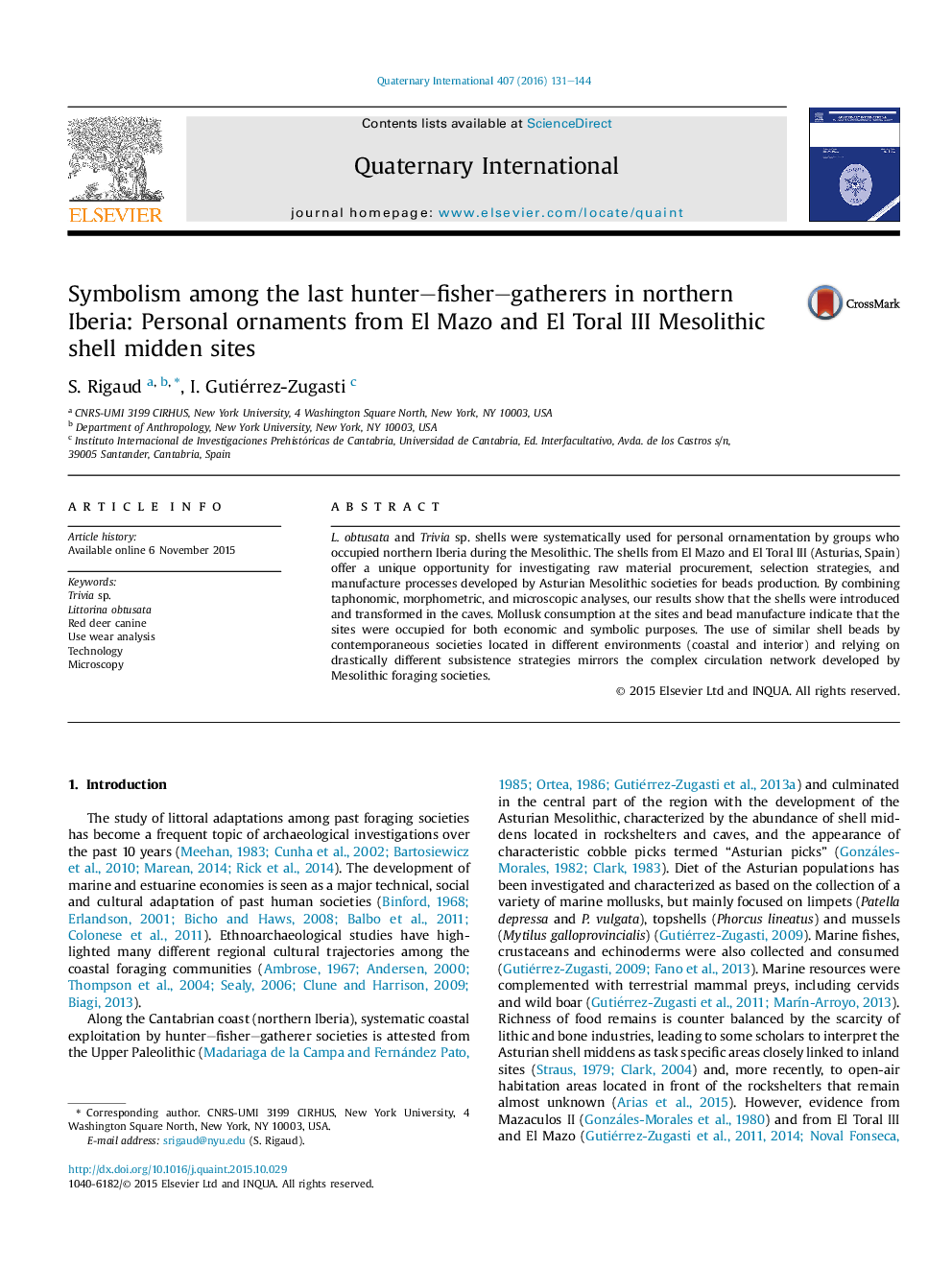| Article ID | Journal | Published Year | Pages | File Type |
|---|---|---|---|---|
| 1040007 | Quaternary International | 2016 | 14 Pages |
L. obtusata and Trivia sp. shells were systematically used for personal ornamentation by groups who occupied northern Iberia during the Mesolithic. The shells from El Mazo and El Toral III (Asturias, Spain) offer a unique opportunity for investigating raw material procurement, selection strategies, and manufacture processes developed by Asturian Mesolithic societies for beads production. By combining taphonomic, morphometric, and microscopic analyses, our results show that the shells were introduced and transformed in the caves. Mollusk consumption at the sites and bead manufacture indicate that the sites were occupied for both economic and symbolic purposes. The use of similar shell beads by contemporaneous societies located in different environments (coastal and interior) and relying on drastically different subsistence strategies mirrors the complex circulation network developed by Mesolithic foraging societies.
